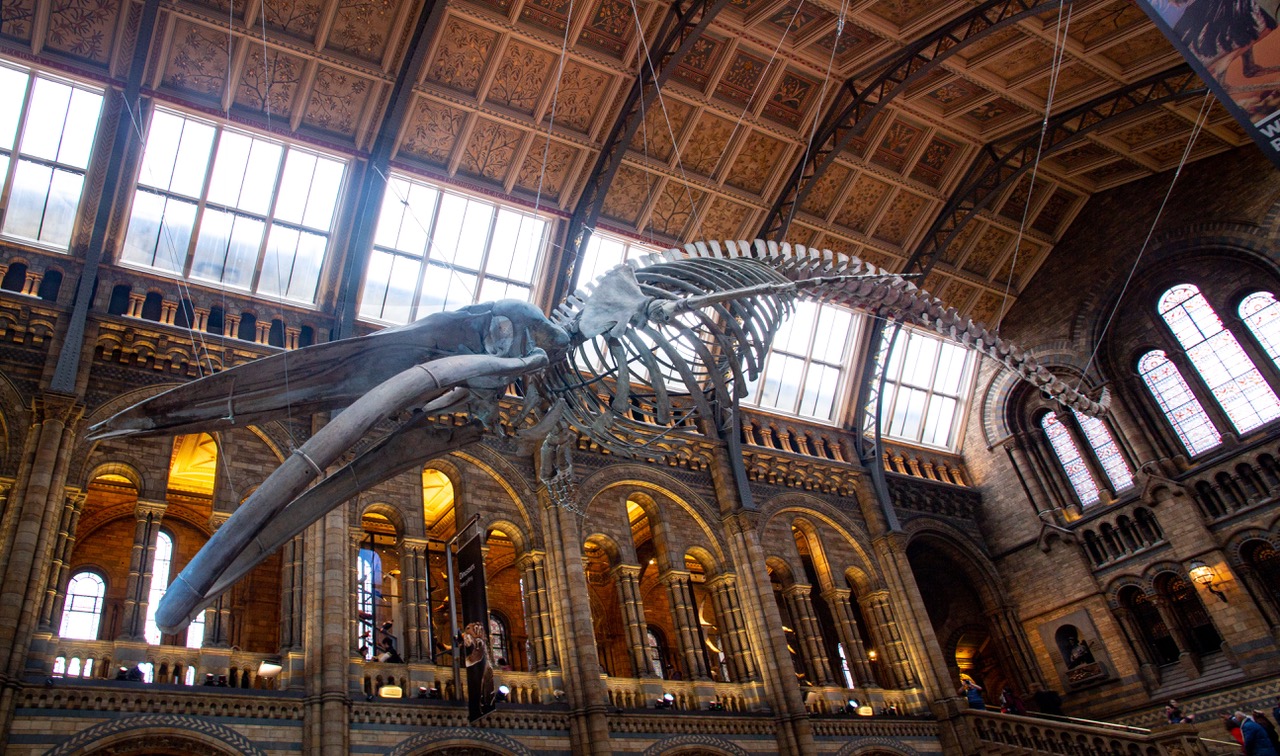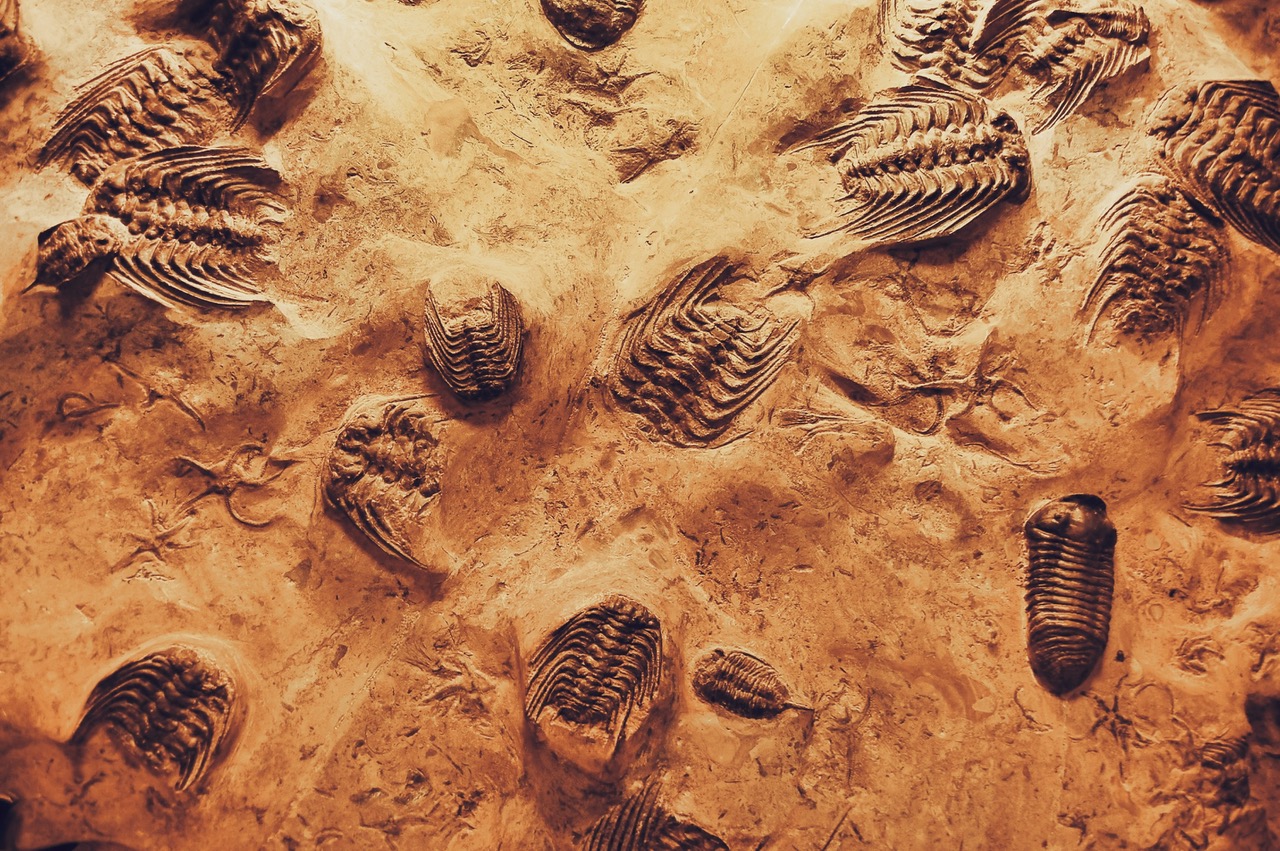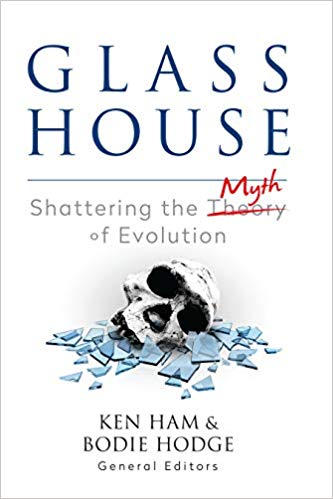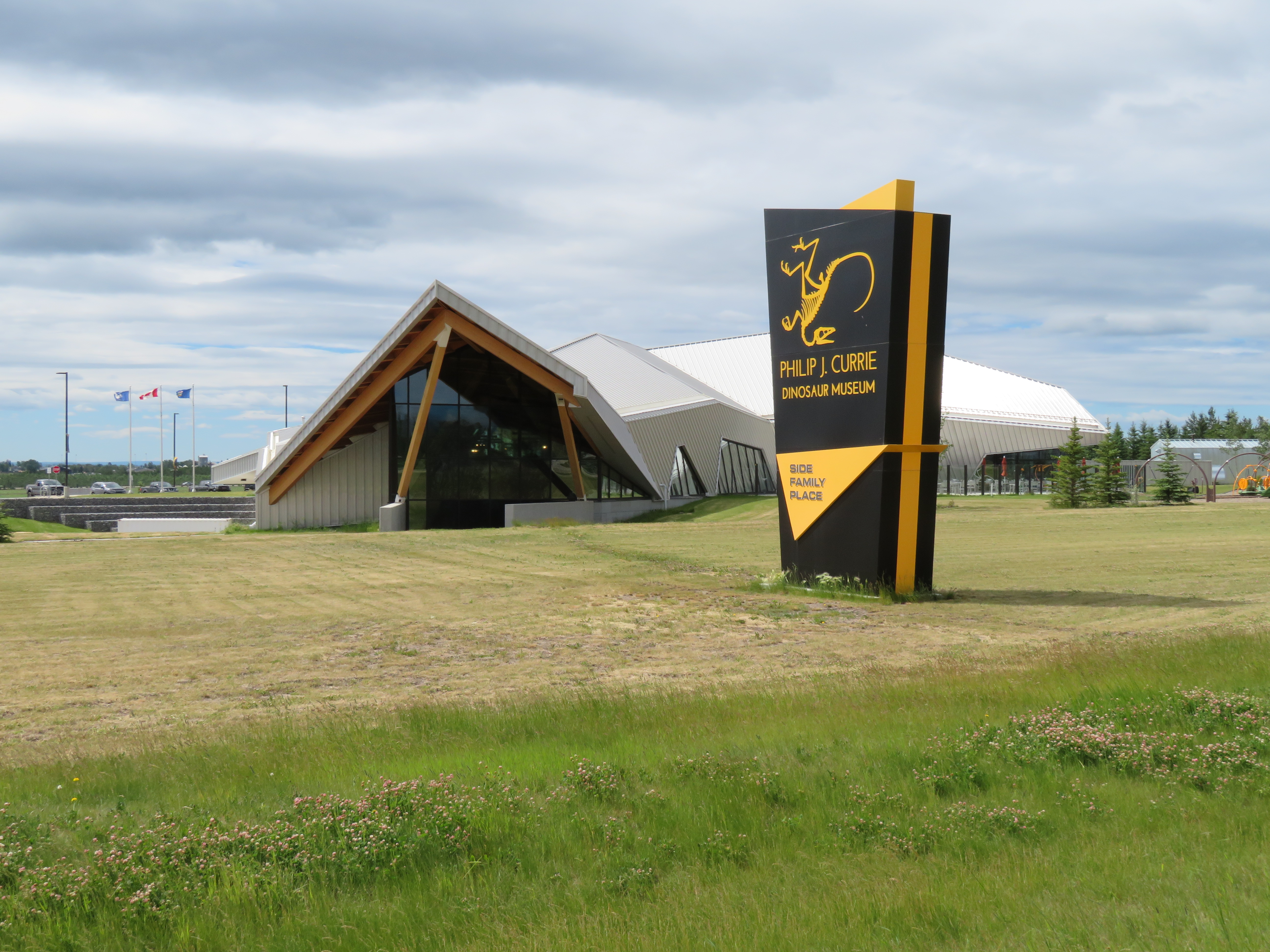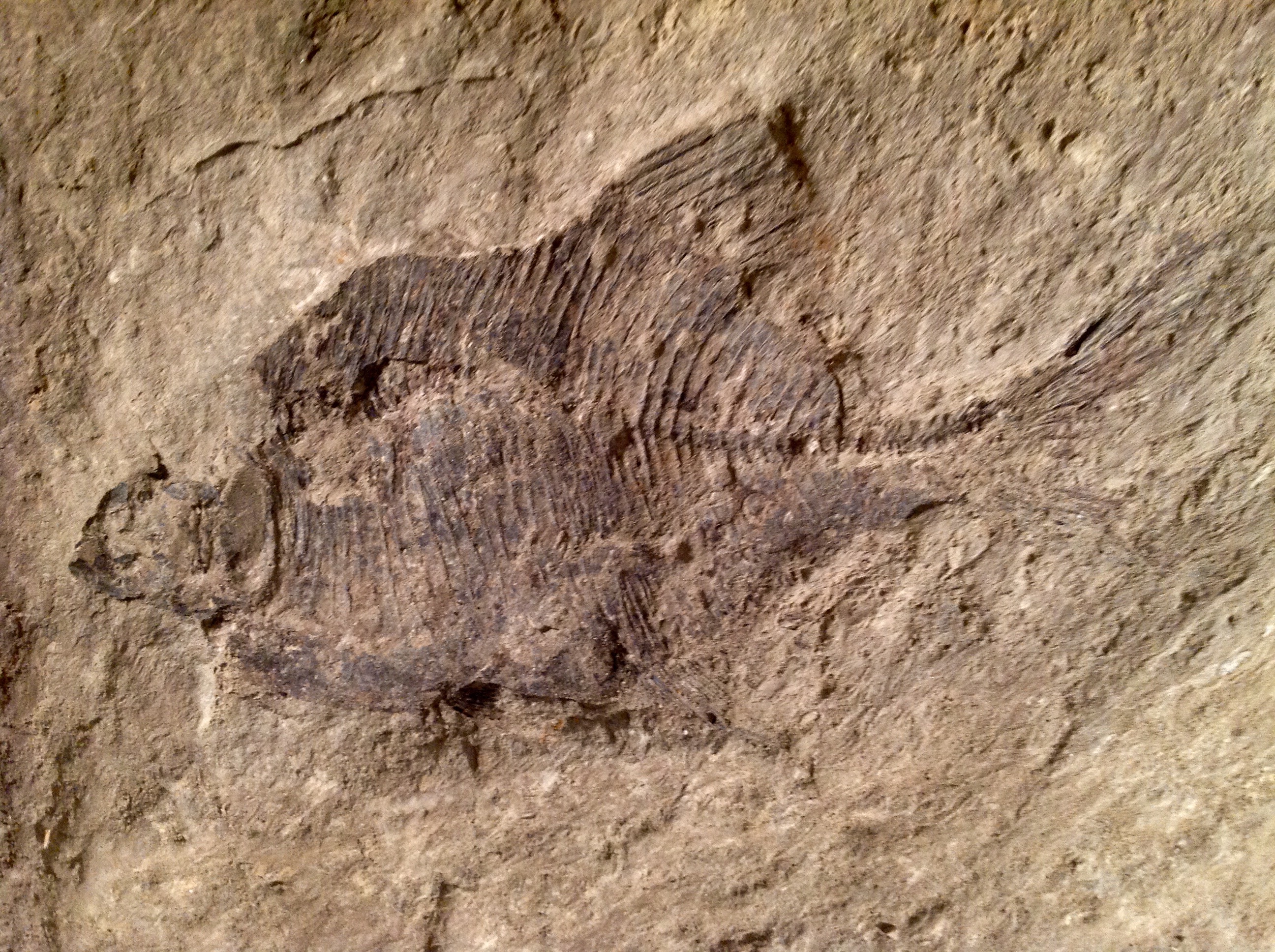Articles » Dinosaurs
Dinosaurs are such showy, dramatic creatures, and their fossils are found in such variety that they have naturally attracted a lot of attention from scientists and the public alike. The question “where did they come from?” has attracted a lot of attention from specialists who seek an evolutionary answer. Nevertheless, a recent article on the topic remarks that relationships (lines of evolutionary descent) between the major groups of dinosaurs have historically been uncertain. Why would that be? Have we seen any improvement in this situation with new analyses? [David Cerny and Ashley L. Simonoff. 2023. Statistical evaluation of character support reveals the instability of higher-level dinosaur phylogeny. Nature https://doi.org/10.1038/s41598-023-35784-3 (2023) 13:9273 open access]
Read the rest of this entry »Since the early 1990s, CSAA has produced five editions of a Tour Guide to the Royal Tyrrell Museum. Unlike other guides to similar facilities, this guide includes discussion of most exhibits as they are encountered on a trip through the premises. The fifth and last edition was issued in 2014. It clearly is time for a new edition as there have been many changes since then.
Our guide typically begins with interpretive themes which apply to many of the exhibits. This feature will not change in the new edition. What has changed, is discussion of the preliminary exhibits which occupy about half the space available in the museum. The changes include displays up to the Burgess Shale on the mezzanine.
Read the rest of this entry »Sometimes it takes a youngster to come up with an interesting question. The occasion was a lecture on dinosaurs, presented in Edmonton’s Provincial Museum on December 11, 1990. Following the main address by Dr. Philip Currie of the Royal Tyrrell Museum, an excited group of boy scouts was asking most of the questions. “Is it fun to look for fossils?” “How many dinosaurs has Dr. Currie found?” “What is the biggest fossil found in Alberta?” … Dr. Currie patiently fielded all the queries. Then one young boy asked “Did dinosaurs swim?” As Dr. Currie answered the question, it became evident that this really was an interesting topic.
Read the rest of this entry »Creation Weekend 2021’s on-line conference with paleontologist Dr. Marcus Ross was so dynamic and interesting that it seemed as if we had heard him in person. I found myself thinking about his return trip to Virginia. But, of course, he never left Virginia. Nevertheless, with the wonders of technology, Dr. Ross was able to present two excellent and very different topics. Since his field of expertise is fossils, his whole first presentation dealt with fossils, specifically some scary marine reptiles called mosasaurs. The second talk dealt with the objectives of creationists in their pursuit of science.
In the Royal Tyrrell Museum’s spooky Bearpaw Sea exhibit, if you look up, you will see the skeletons of massive marine reptiles including mosasaurs. Dr. Ross actually came as a student to study Alberta mosasaurs at the Tyrrell Museum. Read the rest of this entry »
Marcus Ross has loved paleontology, and especially dinosaurs, since he was a kid growing up in Rhode Island. His twin passions of Christianity and science have provided some amazing opportunities along the way!
Marcus began his formal studies in geology at the Pennsylvania State University, where he earned a B.S. in Earth Science. It was there that he also began his early work in creation science, writing articles and leading a student creation club on campus. Following graduation, he continued his studies with a M.S. in Vertebrate Paleontology from the South Dakota School of Mines and Technology and later a Ph.D. in Environmental Science (Geoscience) from the University of Rhode Island. His dissertation research focused on the fossil record of mosasaurs, a group of large marine-dwelling lizards known from upper Cretaceous rocks around the world. Read the rest of this entry »
Pterosaurs (Greek pteron and sauros, meaning “wing lizard”) are constructed from a combination of the characteristics of mammals, birds and dinosaurs with one of the weirdest looking beaks possible added on. This example points to the problem of taxonomy, the science of classifying life. Pterosaurs fly like birds and can flap their “wings” like a bird. They also can soar like an eagle using bat-like wings made from a flap of skin stretched between their body and a long fourth finger called the wing finger. They also have many body traits like dinosaurs. For this reason, they are often referred to as flying dinosaurs, or dragons of the air (Unwin, 2006, p. 2). Ironically, they are classified as reptiles likely because birds supposedly evolved after them.
Pterosaurs were first discovered in 1784 in the German Solnhofen limestone quarries. This is the same location where another strange creature, Archaeopteryx, originally identified as a pterosaur, was found (Clarey, 2015, p. 66). Twenty-nine pterosaur species, over 26% of the 110 pterosaur species currently known (in about 85 genera), have been found in Solnhofen limestone quarries alone.
One of the pleasures of staffing a book table are the conversations that happen with people looking at the resources. On many occasions, individuals have requested an introduction to creation. Before responding, I have often inquired what the person’s interests are. If the person is interested in physics and mathematics, or in apologetics, there might be little point in showing them a work on fossils, for example. In the 1970s and 1980s, there were general introductory books like Scientific Creationism and What is Creation Science? But that was then, and this is now. There are many areas of science that were not even contemplated then, but which we have to deal with today. The good news now is that some general introductory works have appeared which can be very helpful to many people seeking insights into the issues. Read the rest of this entry »
My husband and I recently visited the Philip J. Currie Museum at Wembley in northwestern Alberta. The rationale for building this beautiful new facility was the Pachyrhinosaurus bonebed at nearby Pipestone Creek. This horned dinosaur is very interesting, known from bonebeds in Alberta and the north slope of Alaska. The museum did not display a model of the highly concentrated bone bed (up to 200 bones per square metre), nor a skeleton of Pachyrhinosaurus, nor a model of the creature (that I saw). They did however display different sizes of one kind of arm bone to illustrate that animals of all ages were overtaken by the same watery catastrophe. Read the rest of this entry »
A place where families can play and learn!
This summer during our annual family camping trip on a gloomy definitely-not-beach-weather kind of day, we discovered the DINOS (Discovery Institute of Nature, Origins and Science) Centre. When someone suggested going to a new facility with a unique combination of indoor mini-golf, laser tag, and a café, as well as a Bible History Museum and an outdoor driving range, everybody agreed! Read the rest of this entry »
Secular scientists usually do not like to mention discoveries or achievements of people who support Biblical creation. Recently however, some creation supporters have come to the attention of many scientists and even the secular media.
Mark Armitage, for example, recently published an article on soft un-fossilized tissue in one of the largest Triceratops horns ever found in Montana. Mr. Armitage had found the dinosaur fossil himself in 2012. Then in February 2013 he, along with biologist Kevin Lee Anderson of Arkansas State University-Beebe, published a technical article on this find in a mainstream European scientific journal Acta Histochemica (115, 603-608, 2013). Entitled “Soft sheets of fibrillary bone from a fossil of the supraorbital horn of the dinosaur Triceratops horridus.” The article established this find as “the first report of sheets of soft tissues from Triceratops horn bearing layers of osteocytes [bone forming cells], and extends the range and type of dinosaur specimens known to contain non-fossilized material in bone matrix.” (p. 603) Read the rest of this entry »
Since the early 1990s, the Creation Science Association has published an alternative tour guide to the Royal Tyrrell Museum in Drumheller, Alberta. This world class facility was built in large part to display fossils from western Canada, and particularly Alberta. Also a few fossils from the western United States are on display.
The museum has re-invented its displays many times over the years, probably in an effort to maintain public interest. Certainly there are a lot of interesting new fossil finds now on display. Initially many fossilized marine animals without backbones were on display as well as large land (and marine) reptiles. Now most of the beautiful marine creatures are gone. Also a large simulated scene at the far end of the Great Dinosaur Hall has long since been replaced by a presentation on horned dinosaur diversity and relationships. Read the rest of this entry »
Any visitor, upon entering the Royal Tyrrell Museum (in Drumheller, Alberta), could certainly be excused for exclaiming “Wow!” as they catch sight of the first fossil on display. The visitor has already passed through a simulated scene of Albertosaurus models, posed as they might have appeared in life. This scene is based on a bone bed of 22 individuals discovered about 1910 by Barnum Brown at Dry Island Buffalo Jump Provincial Park. But we press onward and wow!! There high on the wall to the left in the next gallery is a Tyrannosaurus rex skeleton, almost all there, displayed as it was discovered lying in the rocks. Read the rest of this entry »
It is interesting how dinosaur artifacts continue to amaze us. For example, in 1961, petroleum geologist R. L. Liscomb discovered a large bone bed on the banks of the Colville River in Alaska, not far from the Arctic Ocean. Since the bones were not perminieralized (fossilized), he assumed they were recent bison bones. He deposited some in a museum and for twenty years nobody gave the bones another thought. Then somebody noticed that these were Edmontosaurus bones (duckbill dinosaur). In 1985 palaeontologist William A. Clemens reported abundant dinosaur bones at the Liscomb site and in 1987 associate Kyle L. Davies described the condition of the dinosaur bones: “The quality of preservation is remarkable. The bones are stained a dark red brown but otherwise display little permineralization, crushing or distortion.” (J. Paleontology 61 #1 p. 198). Could such bones really be millions of years old as many scientists now supposed?
Dinosaur books are everywhere. There is no doubt about that. And you might well suppose that there is nothing new under the sun when it comes to discussions about dinosaurs. However Albertan Vance Nelson of Creation Truth Ministries has achieved the seemingly impossible. His argument about dinosaurs is new and fascinating. And the book is magnificent with beautiful illustrations from sites around the world. Also there are wonderful dinosaur reconstructions based on the latest scientific information. Read the rest of this entry »
Imagine a dinosaur being swept far out to sea. It might seem like a crazy idea, but it appears that such an event happened in many places. The story however becomes even more amazing when we learn that these victims were unusually heavy creatures for their size, the kind that would be expected to sink like a stone once they were in water over their heads. To some, the story may not come as a complete surprise however. Way back in the dark ages, for example in the spring of 1995, an item appeared in Dialogue. In part, it ran as follows…… Read the rest of this entry »


